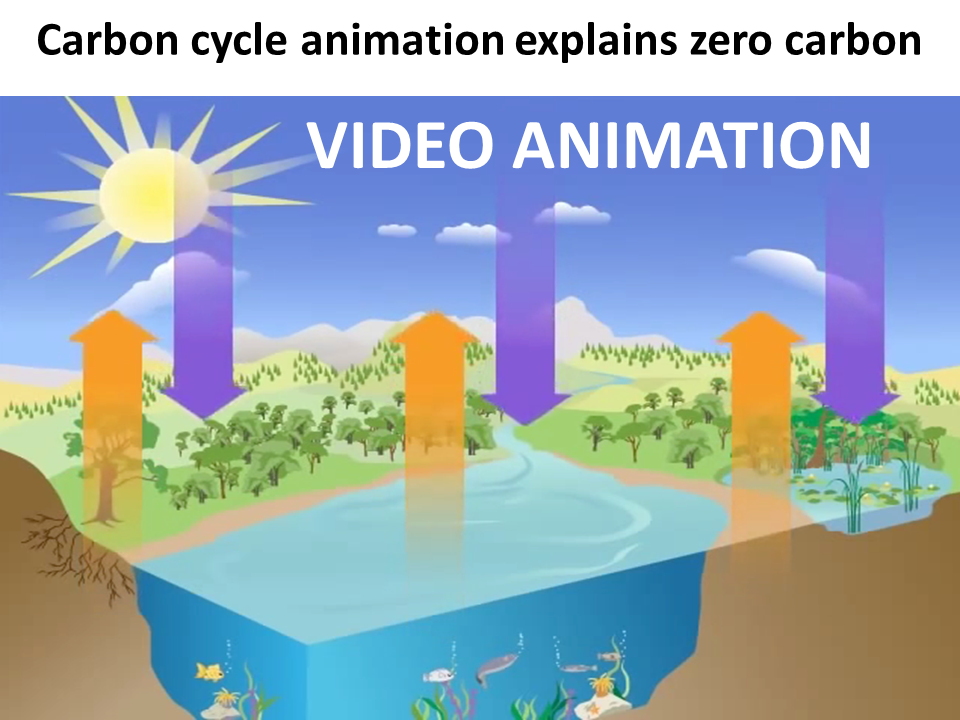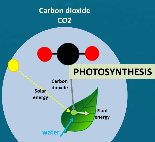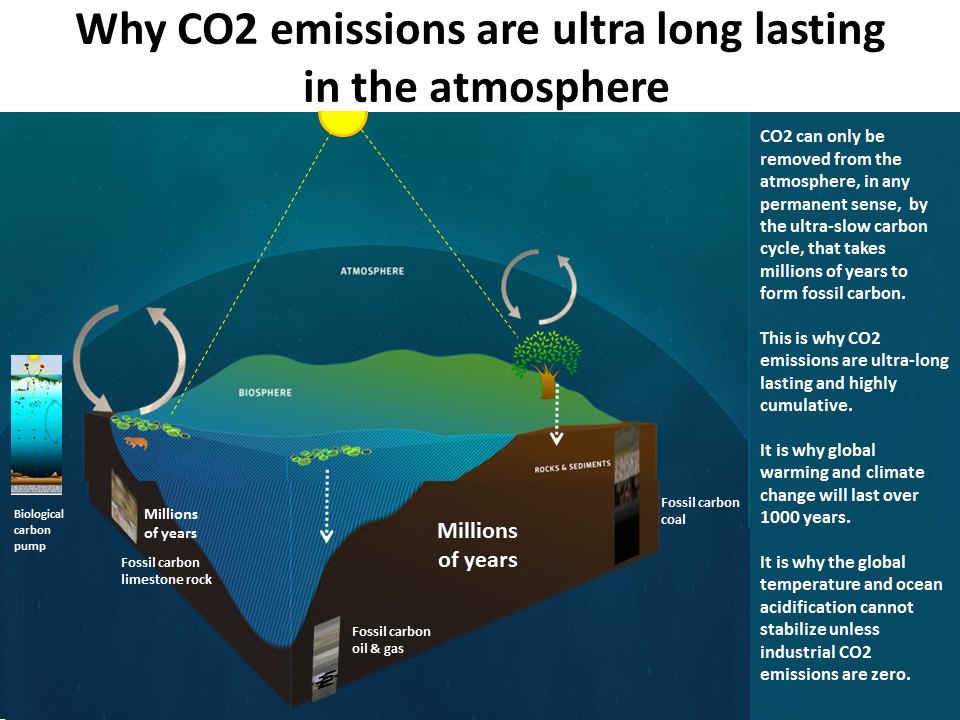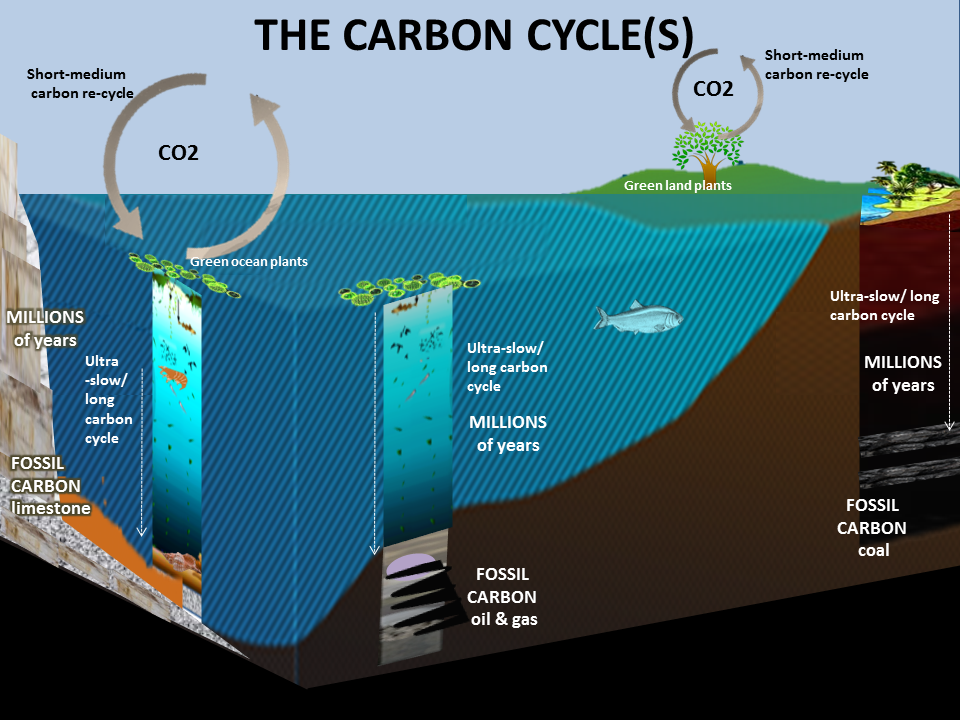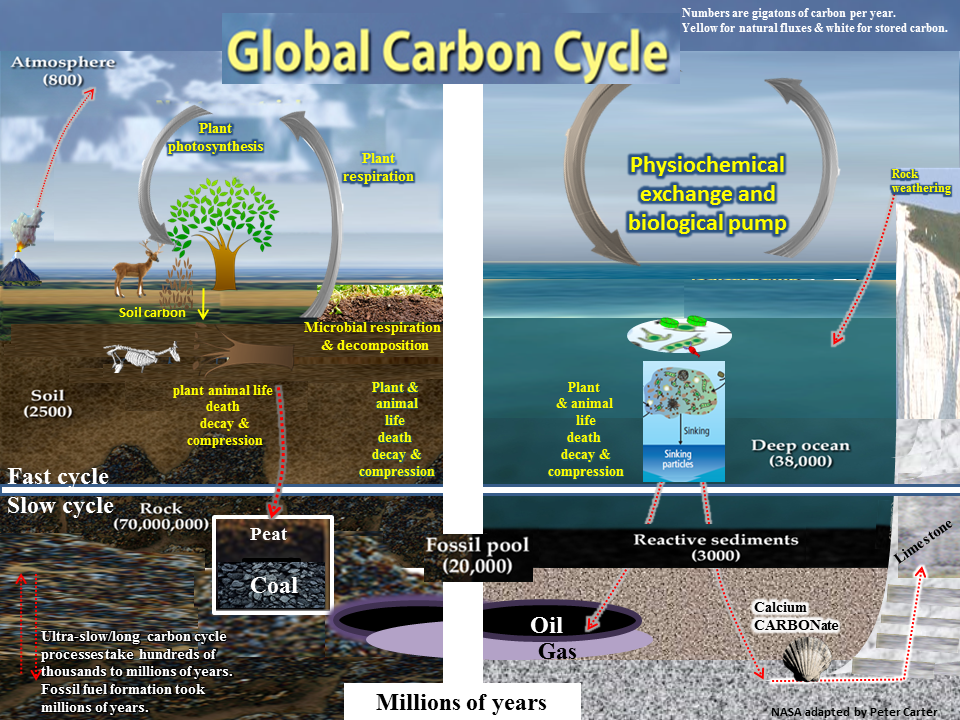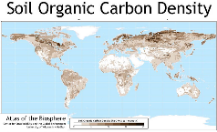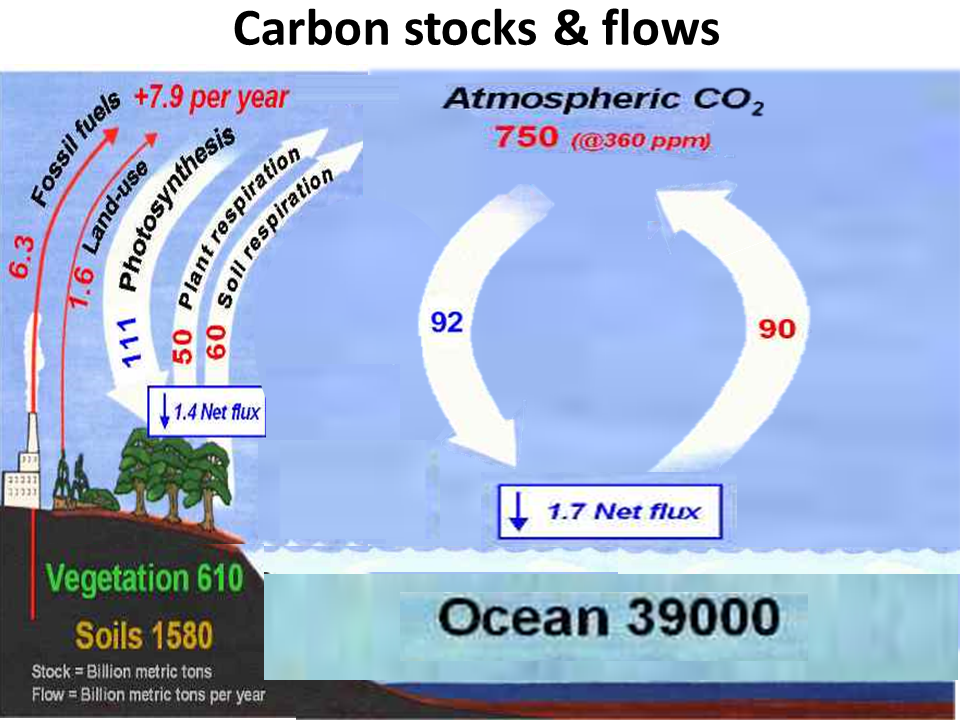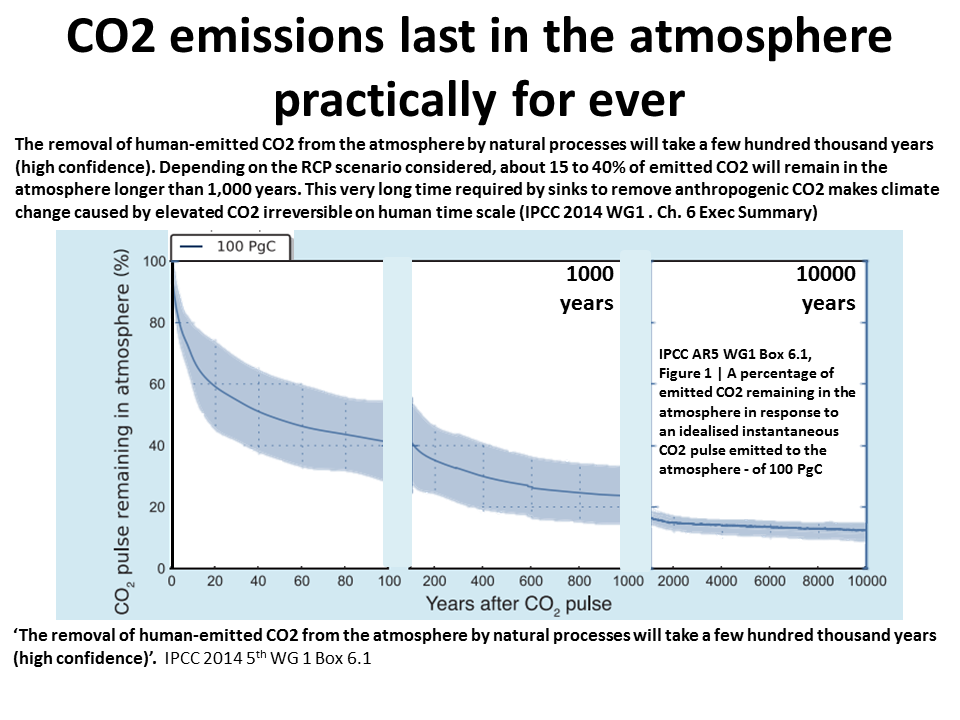
Climate Change Knowledge
The Carbon Cycle
Short/fast and long/slow carbon cycles
NASA article The Carbon Cycle
What is the Carbon Cycle
United States Carbon Cycle Science Program
NASA article The Carbon Cycle
What is the Carbon Cycle
United States Carbon Cycle Science Program
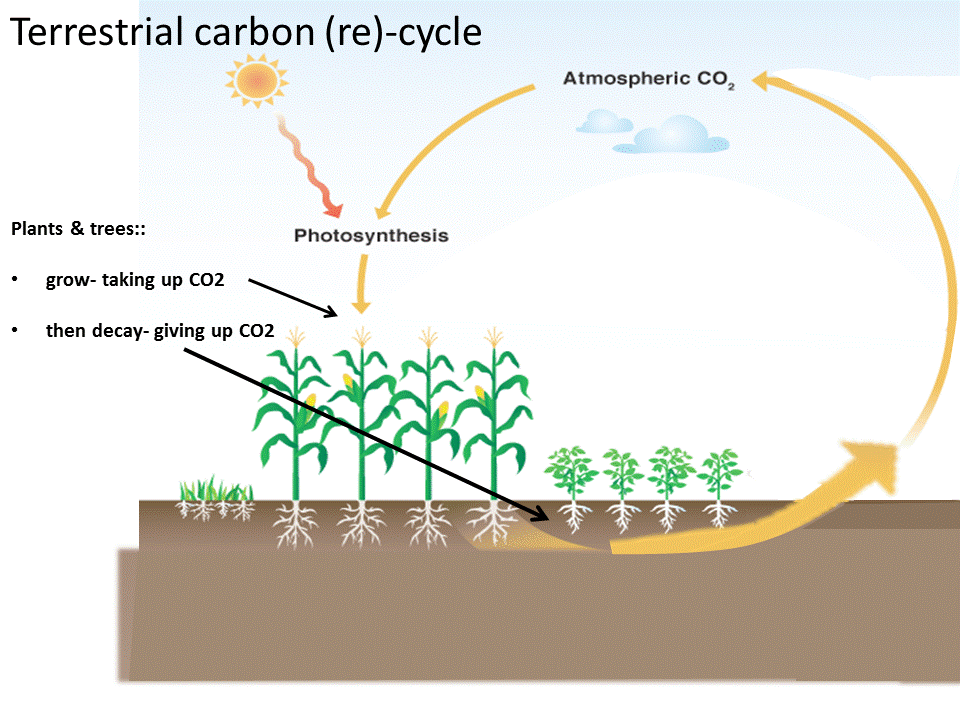
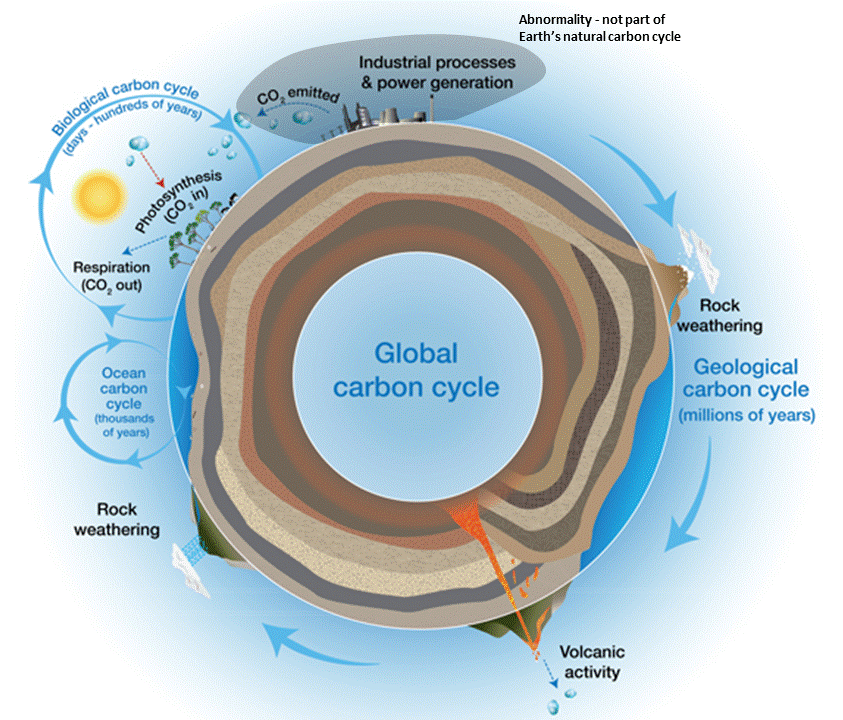
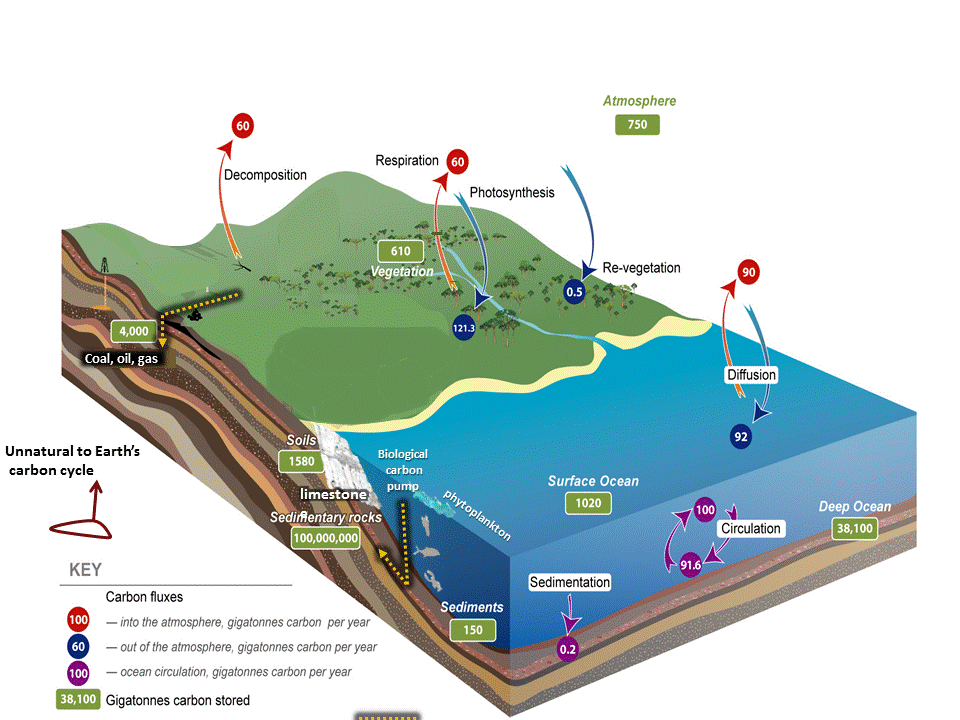
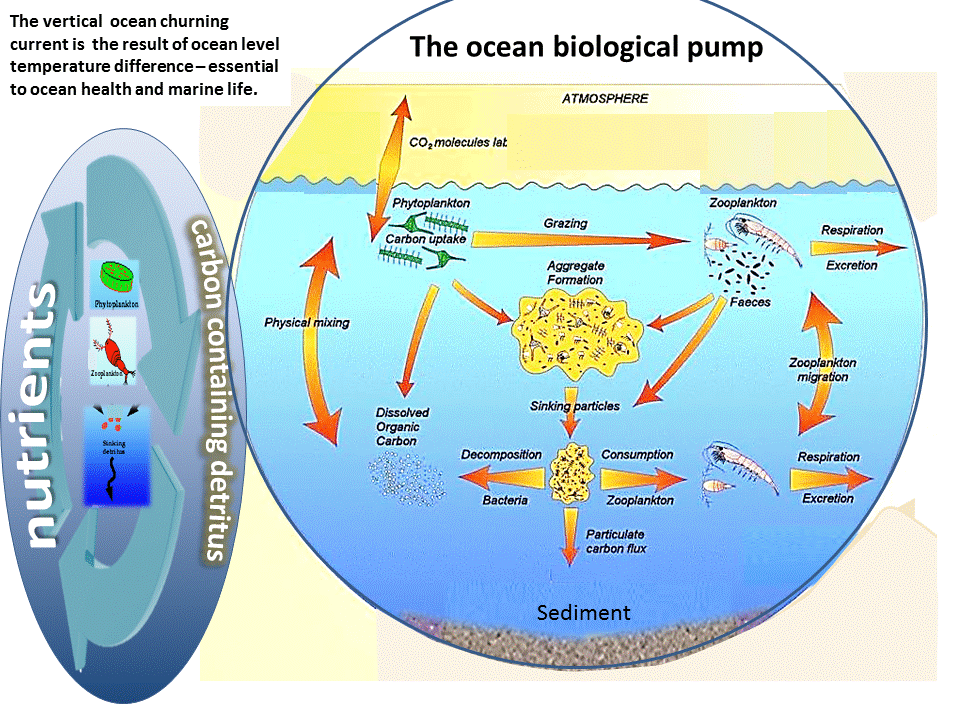
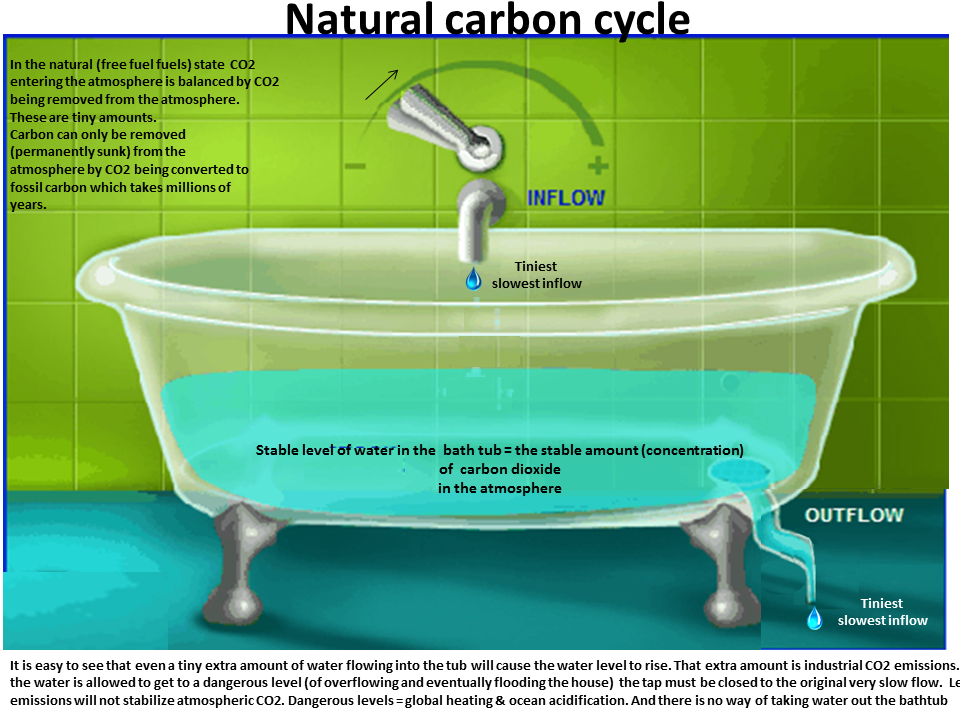
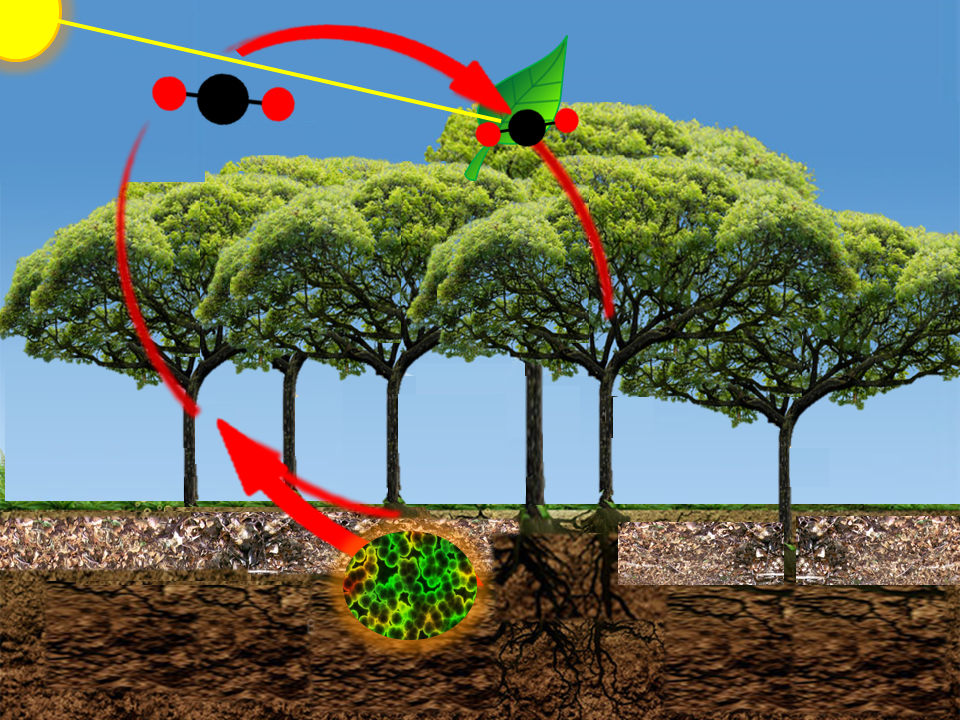
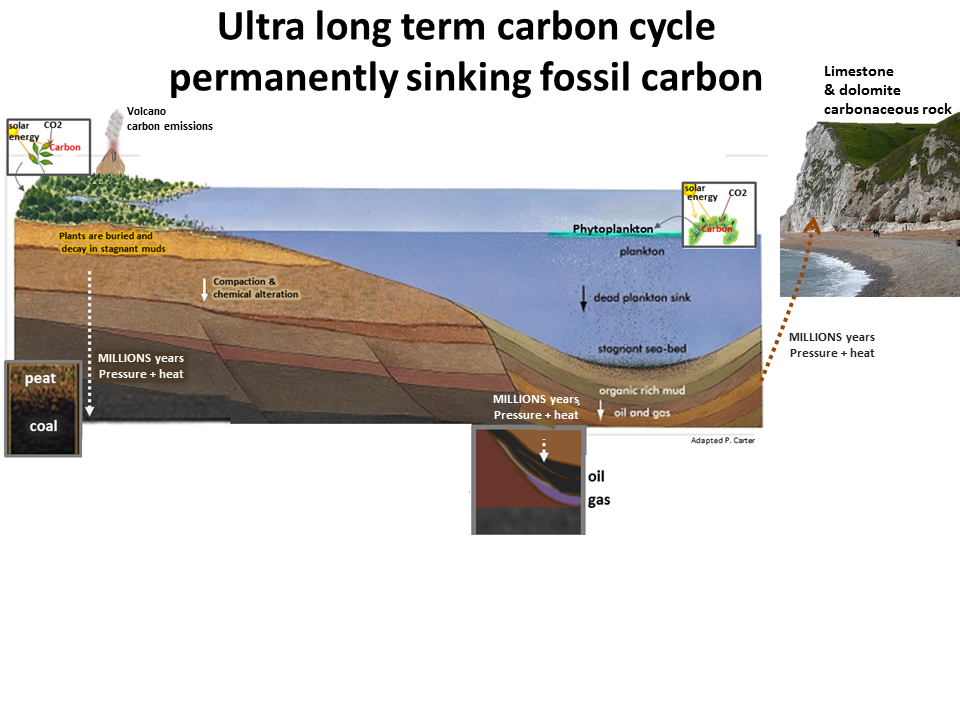
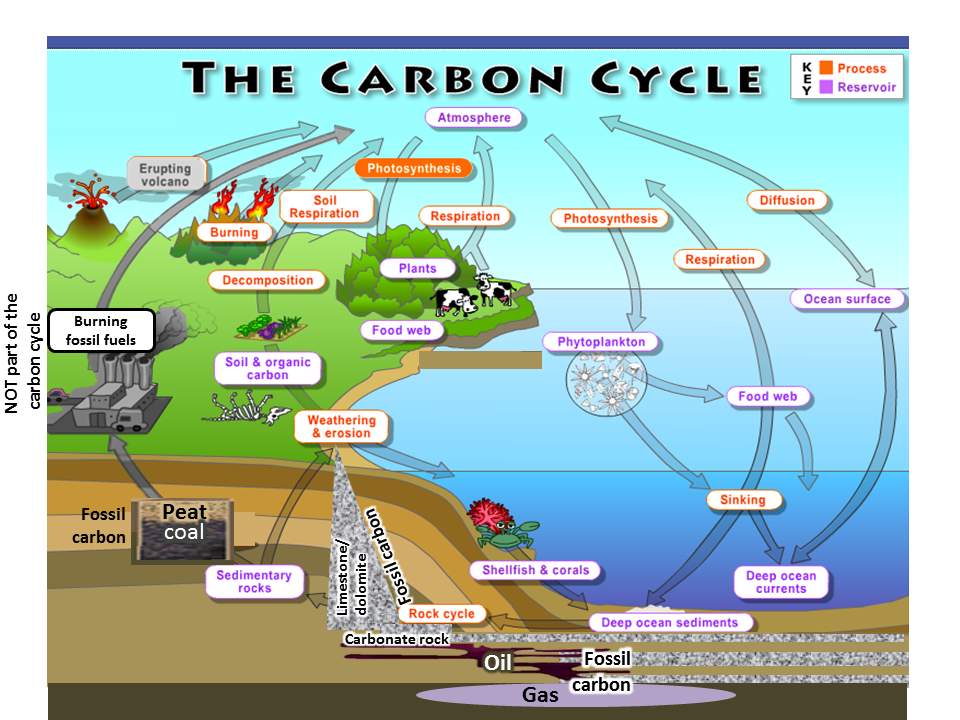
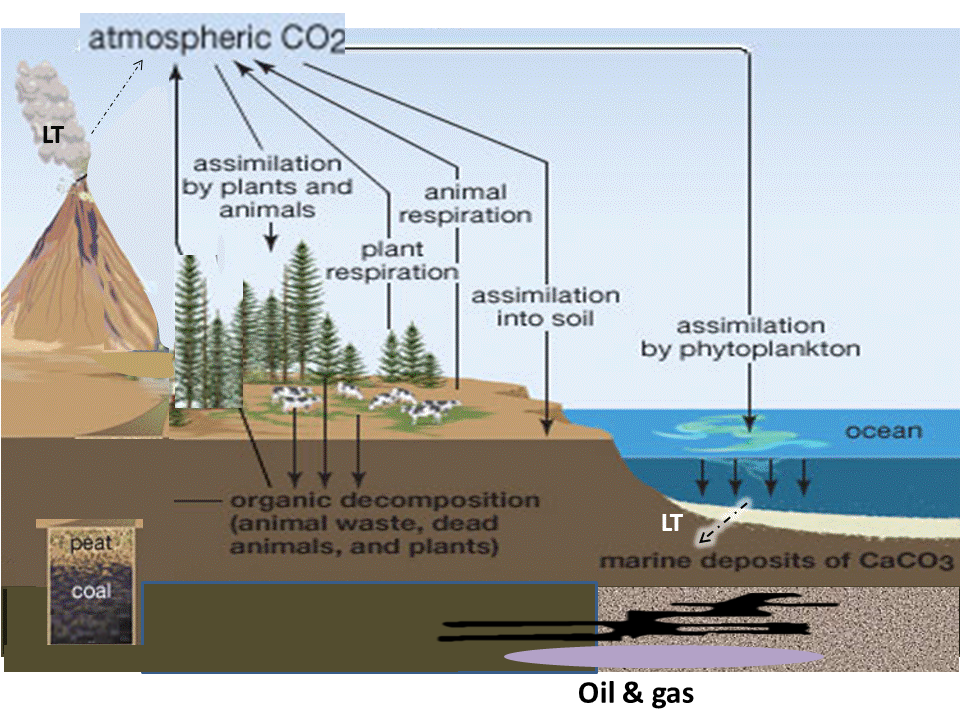
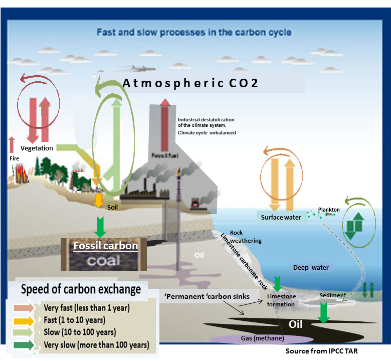
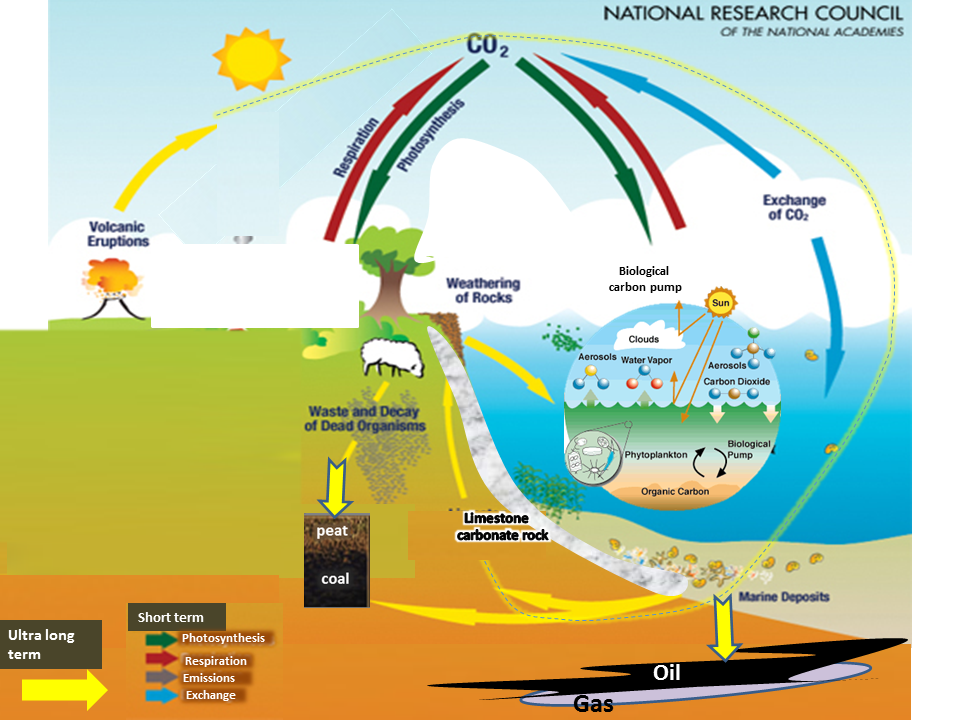
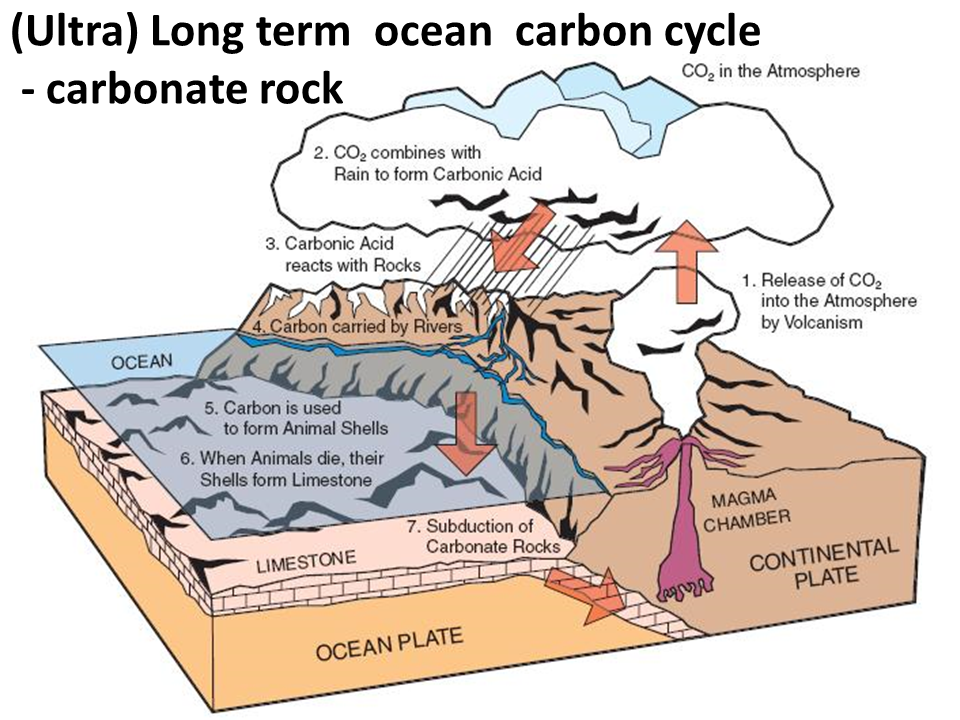
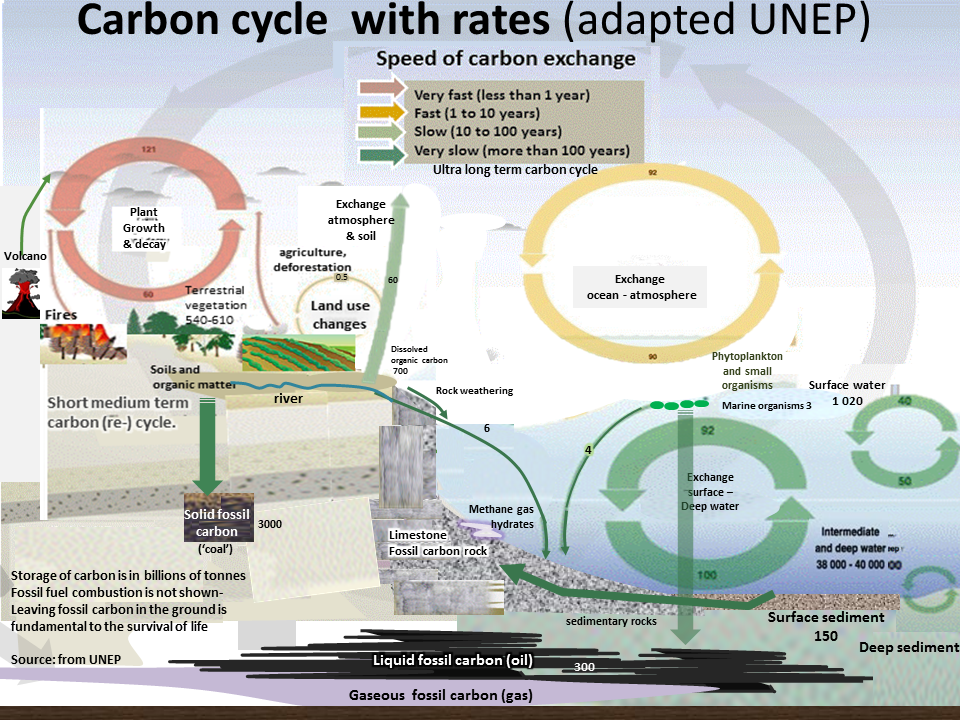
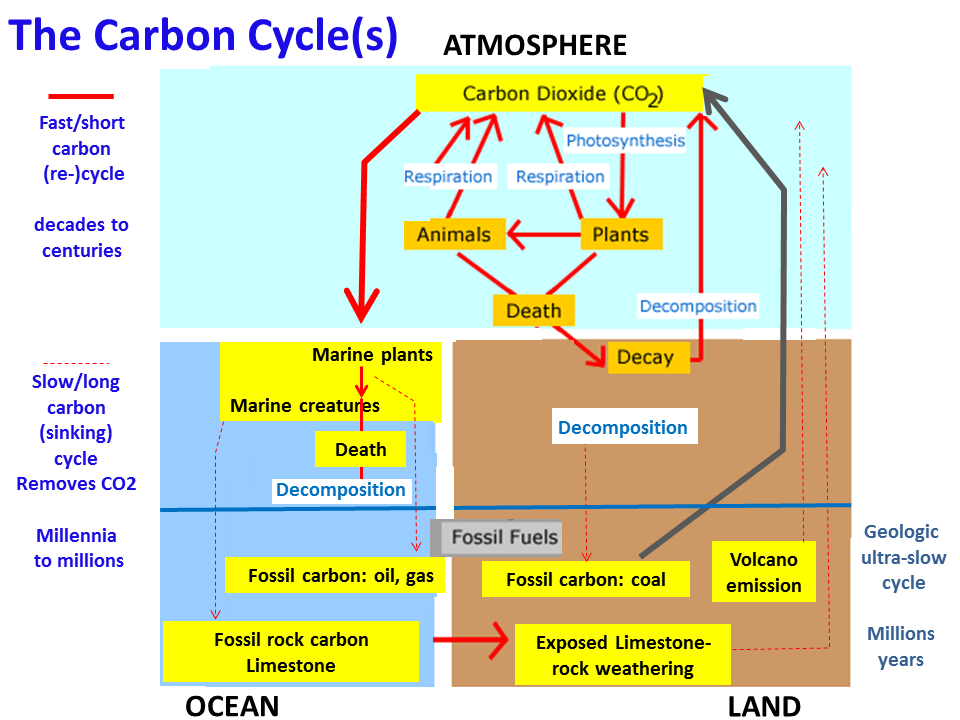
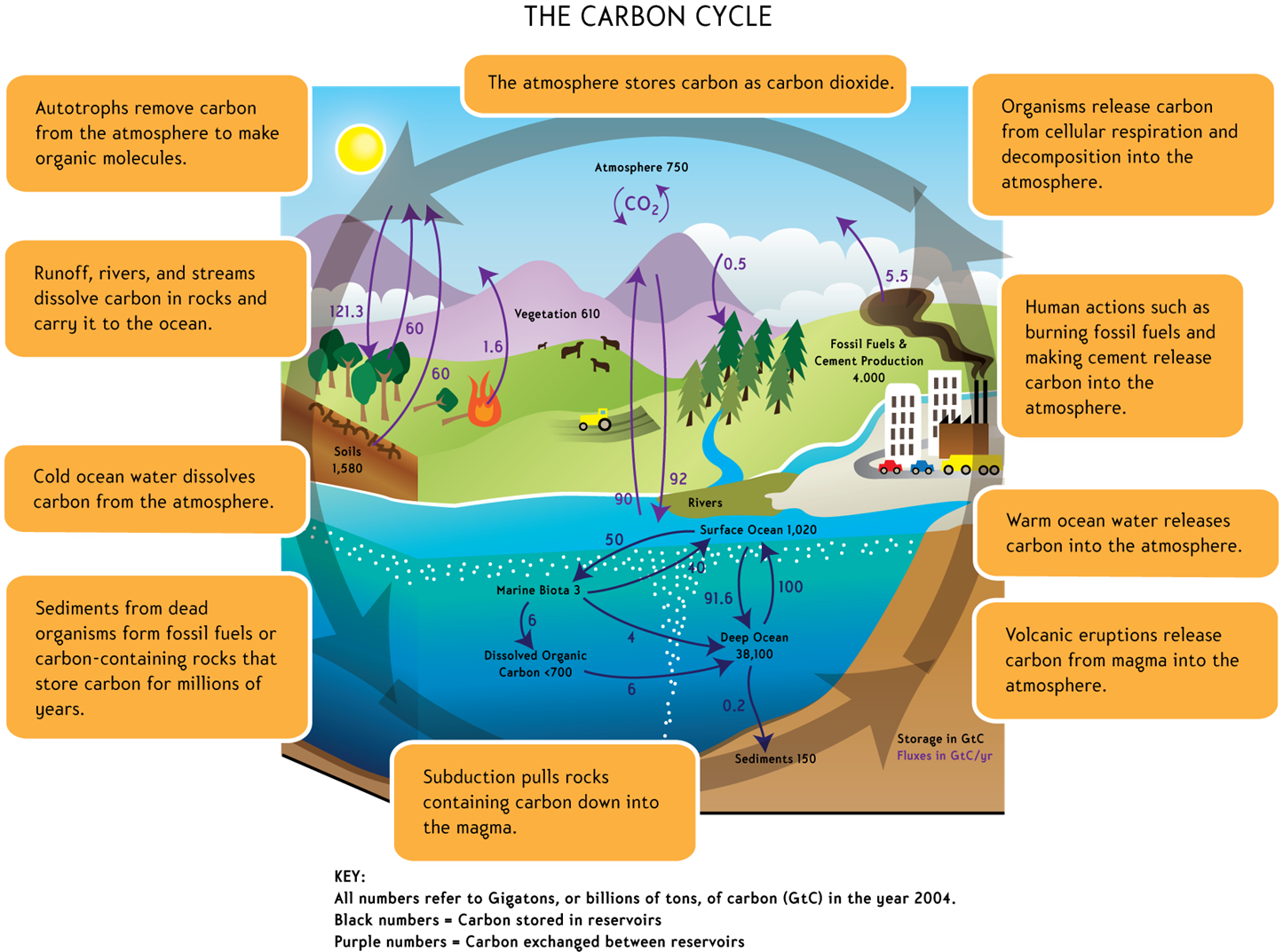
Carbon dioxide is the top greenhouse gas in causing global warming and climate change, and it also causes ocean acidification. The science of CO2 in climate and of ocean ocean acidification is the science of the carbon cycle/s.
Carbon cycles through land and oceans. For both there are two carbon cycles.
The short/fast carbon cycle is the biological carbon cycle we are familiar with is.
The long or (ultra) slow carbon cycle that determines climate (climate
change) is the geological cycle by which fossil carbon in formed.
This is the only actual carbon sink that removes CO2 from the carbon cycle.
This takes hundreds of thousands of years and is why our CO2
emissions will not be totally removed from the atmosphere for hundreds
of thousands of years (IPCC AR5)
Coal was formed from huge ancient forests that grew in swamps mostly
starting 300 million years ago with the youngest coal one million years old.
The other fossil carbons were formed in the ancient ocean sediments and
huge lakes.
Oil and gas formation happened 300 million years to 400 million years ago.
This makes the oceans by far the largest true carbon sinks (atmospheric CO2 removal).
Oil and gas started to form when the Earth was all ocean and swamp. Also over millions of years the land has moved and there has been upheavals of the ocean floors.
This 2010 ocean research confirms the primary role of the oceans in cycling carbon
Ocean phytoplankton take up the most CO2. The ocean biological carbon pump depends on phytoplankton and is essential to the deep ocean floor formation of fossil carbon oil, gas and limestone rock.
Planting trees to offset our carbon emissions does not work because this is the short term carbon cycle, which only stores carbon. The trees will absorb CO2 but then later return it back to the atmosphere.
The best we can do is biochar (pyrolysis) that can store carbonfor 100s of years.
Carbon cycles through land and oceans. For both there are two carbon cycles.
The short/fast carbon cycle is the biological carbon cycle we are familiar with is.
The long or (ultra) slow carbon cycle that determines climate (climate
change) is the geological cycle by which fossil carbon in formed.
This is the only actual carbon sink that removes CO2 from the carbon cycle.
This takes hundreds of thousands of years and is why our CO2
emissions will not be totally removed from the atmosphere for hundreds
of thousands of years (IPCC AR5)
Coal was formed from huge ancient forests that grew in swamps mostly
starting 300 million years ago with the youngest coal one million years old.
The other fossil carbons were formed in the ancient ocean sediments and
huge lakes.
Oil and gas formation happened 300 million years to 400 million years ago.
This makes the oceans by far the largest true carbon sinks (atmospheric CO2 removal).
Oil and gas started to form when the Earth was all ocean and swamp. Also over millions of years the land has moved and there has been upheavals of the ocean floors.
This 2010 ocean research confirms the primary role of the oceans in cycling carbon
Ocean phytoplankton take up the most CO2. The ocean biological carbon pump depends on phytoplankton and is essential to the deep ocean floor formation of fossil carbon oil, gas and limestone rock.
Planting trees to offset our carbon emissions does not work because this is the short term carbon cycle, which only stores carbon. The trees will absorb CO2 but then later return it back to the atmosphere.
The best we can do is biochar (pyrolysis) that can store carbonfor 100s of years.
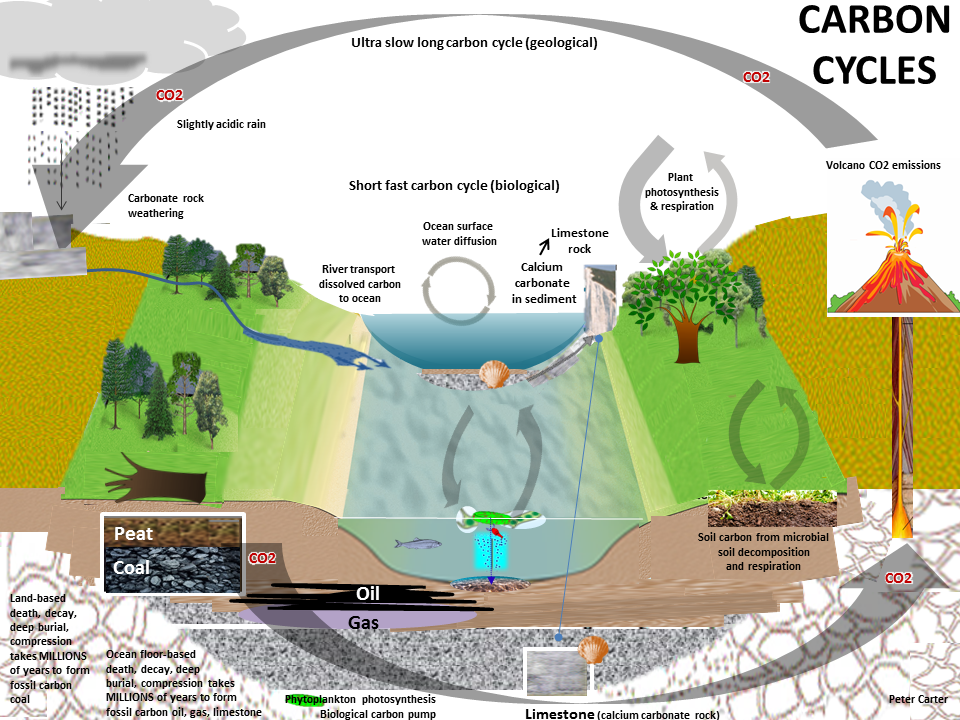
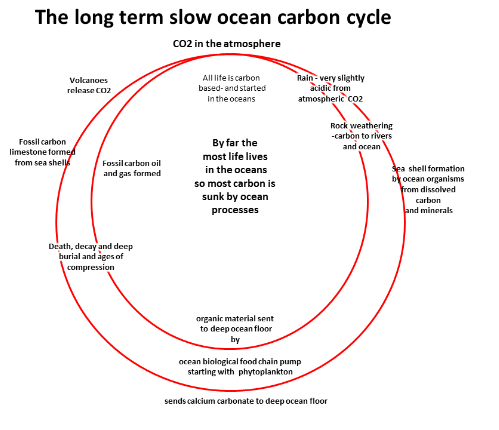
The ultra long term carbon cycle determines the ultra long life of CO2 emissions in the atmosphere.
It will take hundreds of thousands of years for all human CO2 emissions to be removed from the atmosphere (IPCC 2014 AR5 WG1
This makes CO2 emissions highly persistent and cumulative in the atmosphere.
This in turn determines the fact that global temperature and ocean acidification cannot stabilize without zero industrial carbon emissions.
It is ironic that the very formation of fossil carbon coal, oil and gas means we cannot burn any more fossil coal as 'fossil fuel reserves'.
It will take hundreds of thousands of years for all human CO2 emissions to be removed from the atmosphere (IPCC 2014 AR5 WG1
This makes CO2 emissions highly persistent and cumulative in the atmosphere.
This in turn determines the fact that global temperature and ocean acidification cannot stabilize without zero industrial carbon emissions.
It is ironic that the very formation of fossil carbon coal, oil and gas means we cannot burn any more fossil coal as 'fossil fuel reserves'.
Includes carbon fluxes
Long term ultra-slow carbon cycle
Various images showing fast & slow cycles
The ocean biological & carbon pump, starting with phytoplankton is crucial.
